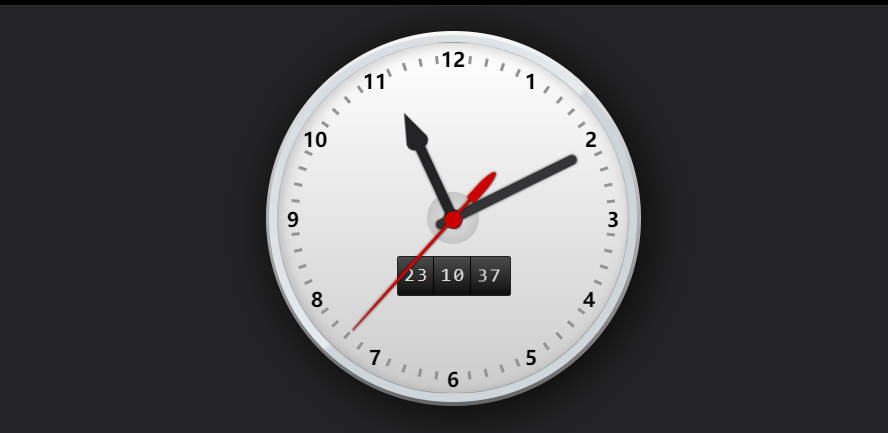本文介绍了Swift基本数据类型的使用,和与Objective-C语法的差别。另外,函数的基本语法,闭包(Closure)的基本语法,Closure与Function结合使用,以及一些需要注意的问题。
数据类型 元祖(Tuples) Tuples可以把多个不同类型的值合成一个复合值。
1 2 3 4 5 6 7 8 9 10 11 12 // Tuple type let httpStatus = (200, "success") let httpErrorStatus = (404, "File not found") //避免使用, 程序可读性较差 httpStatus.0 httpErrorStatus.1 //给每一个值起别名,使用名称访问 let personInfo = (name: "Tom", age: 20, sex: "男") personInfo.name personInfo.age personInfo.sex
?? 1 2 3 4 5 6 7 8 9 var nameString: String? var nameStringD = nameString ?? "A default name" //结果为: A default name var nameString: String? = "Owenli" var nameStringD = nameString ?? "A default name" //结果为:Owenli
Range Operator 1 2 3 4 5 6 7 8 9 10 11 12 //: Close range Operator //begin...end for index in 1...5 { print(index) } //输出:1 2 3 4 5 //begin..<end for index in 1..<5 { print(index) } //输出:1 2 3 4
Collections Array 1 2 3 4 5 6 7 8 9 10 11 12 13 14 15 16 17 18 19 20 21 22 23 24 25 26 27 28 29 30 31 32 33 34 35 36 37 38 39 40 41 42 43 44 45 46 47 48 //: ### Collections //: Ordered colletion //: Unordered colletion //: ### Array var array1: Array<Int> = Array<Int>() var array2:[Int] = array1 var array3 = array1 var threeInts = [Int](count: 3, repeatedValue:1) var sixInts = threeInts + threeInts var fiveInts = [1, 2, 3, 4, 5] //: Acess //count fiveInts.count //Empty if array2.isEmpty { print("array2 is empty") } // Append array1.append(1) //[1] array2 += [2, 3 ,4] // Indices array2[2] //4 array2[0...1] //[2, 3] array2[1...2] //[3, 4] array2[0..<2] //[2, 3] array2[0...1] = [5] //[5] array2 //[5, 4] //Insert and remove element at index array2.insert(6, atIndex: 0) array2.removeAtIndex(0) array2 array2.removeLast() //index and value for (index , value) in fiveInts.enumerate() { print("index : \(index); value:\(value)") }
Set 1 2 3 4 5 6 7 8 9 10 11 12 13 14 15 16 17 18 19 20 21 22 23 24 25 26 27 28 29 30 31 32 33 34 35 36 37 38 39 40 41 42 let emptySet = Set<Character>() let vowel: Set<Character> = ["a", "b", "c"] var evenSet:Set = [2, 3, 4, 5] //basic operator vowel.count emptySet.isEmpty evenSet.insert(12) evenSet.remove(12) evenSet.contains(2) for number in evenSet.sort() { print(number) } for number in evenSet { print(number) } //: Set operation var setA: Set = [1, 2 , 3, 4 ,5 , 6] var setB: Set = [4, 5, 6, 7, 8 , 9] let interSectAB:Set = setA.intersect(setB) let exculusiveAB:Set = setA.exclusiveOr(setB) let unionAB:Set = setA.union(setB) let aSubstractB = setA.subtract(setB) var setC: Set = [1, 2, 3] //超集 setA.isSupersetOf(setC) //子集 setC.isSubsetOf(setA) // setA.isStrictSupersetOf(setC) setC.isStrictSubsetOf(setA) //无交集 setB.isDisjointWith(setC)
Dictionary 1 2 3 4 5 6 7 8 var initDictionary = [Int: String]() var cityNumber = [ 1: "beijing", 2: "shanghai", 3: "shandong" ]
数组操作与Objective-C相似。
Control Flow for/while if 注意:条件不用加括号,另外if条件可以是表达式
Switch 注意:
switch条件不需要括号,内部不需要break,默认执行完一条语句跳出switch。如果不跳出需要使用fallthrogh修饰
case 可以匹配多个值,使用逗号隔开
case 进行区间匹配
default 必须写
每个case必须要有一条语句
Function 函数参数 1 2 3 4 5 6 7 8 9 10 11 12 13 14 15 16 17 18 19 20 21 22 23 24 25 26 27 28 29 30 31 32 33 34 35 36 func printName() { print("My name is Owenli") } printName() //: #### Function param // name Type func multipleOfTen(multipler: Int) { print("\(multipler) * 10 = \(multipler * 10)") } multipleOfTen(5) // innerName -->multiplier // outerName -->andValue func multipleOf(multiplier: Int = 10, andValue: Int = 10) { print("\(multiplier) * \(andValue) = \(multiplier * andValue)") } multipleOf() multipleOf(5, andValue: 9) //: Variadic param func arraySum(number: Double...) { var sum: Double = 0 for i in number { sum += i } print("sum: \(sum)") } arraySum(1, 2, 4 ,5 , 6) //: 函数内部修改参数值 func increment(inout value: Int) { value += 1 } var m = 10 increment(&m)
注意:
函数内部修改参数需要使用inout修饰,并且在调用时传递指针。
函数参数 可以不限个数
函数参数 innerName, outerName。 outerName是为了方便程序阅读。
函数返回值 函数返回值:单个值,多个值,Optional类型, 函数类型
1 2 3 4 5 6 7 8 9 10 11 12 //带返回值的函数 func multipleOf1(multiplier: Int = 10, andValue: Int = 10) -> Int { return multiplier * andValue } multipleOf1() //组合参数 func tableInfo() -> (row: Int, column: Int) { return (4 , 5) } var table = tableInfo()
Optional类型
1 2 3 4 5 6 7 8 //返回一个Optional类型 func string2Int(str: String) -> Int? { return Int(str) } var n = string2Int("123") n.dynamicType //这是 Optional<Int>.Type
函数类型
1 2 3 4 5 6 7 8 9 10 var f1: (Int, Int) -> Int = multipleOf1 var f2 = tableInfo var f3 = string2Int //参数中使用函数类型 func execute(fn:(String) -> Int?, _ fnParam: String) { fn(fnParam) } execute(f3, "123")
内嵌函数
1 2 3 4 5 6 7 8 9 10 11 12 13 14 15 16 17 18 19 20 21 typealias op = (Int) -> Int //重命名 func whichOne(n: Bool) -> op { func increment(n: Int) -> Int { return n + 1 } func decrement(n: Int) -> Int { return n - 1 } return n ? increment : decrement } var one = 1 var oneToTen = whichOne(one < 10) while one < 10 { one = oneToTen(one) }
Closures(闭包) 闭包是自包含函数代码块,可以在代码中被传递和使用。Swift中的闭包同Objective-C中的(block)以及其他一些编程语言的匿名函数比较相似。闭包可以捕获起所在上下文中任意变量和常量的引用。
1 2 3 4 5 6 7 8 9 10 11 //定义完整的Closure var addClosure: (Int, Int) -> Int = { (a: Int, b:Int) -> Int in return a + b } addClosure(5, 10) //简化 addClosure = {a, b in return a + b } addClosure = {a, b in a + b} //Single expression closure // $0, 1, 2 代替a, b addClosure = {$0 + $1}
1 2 3 4 5 6 7 8 9 10 11 12 13 14 15 16 17 18 19 20 21 22 23 24 25 26 27 28 //闭包做参数 func executeClosure(a: Int, _ b:Int, operation: (Int, Int) ->Int) -> Int { return operation(a, b) } func addFunc(a:Int, _ b: Int) -> Int { return a + b } executeClosure(1, 10, operation: addFunc) executeClosure(1, 10, operation: addClosure) //简化 executeClosure(1, 10, operation: {(a: Int, b: Int) -> Int in return a + b }) executeClosure(1, 10, operation: {a , b in a + b}) executeClosure(1, 10, operation: {$0 + $1}) executeClosure(1, 10){$0 + $1} // Trailing Closure 尾随闭包 //void let voidClosure:() -> Void = {}
1 2 3 4 5 6 7 8 9 10 11 12 13 14 15 16 17 18 //capturing values 捕获变量 var count = 0 let incrementCount = { ++count } incrementCount() //1 incrementCount() //2 incrementCount() //3 incrementCount() //4 func counting() -> () -> Int { var count = 0 let incrementCoun: () -> Int = { ++count } return incrementCoun } let c1 = counting() c1() //1 c1() //2
参考资料
简阅Swift - 遇见每一个似曾相识的技术 Swift学习资料Github总结 The Swift Programming Language 2.0 中文版












